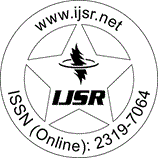Downloads: 1
India | Dentistry | Volume 14 Issue 9, September 2025 | Pages: 1342 - 1347
Evaluation of Residual Oral Biofilm on Used Healing Abutments - An Invitro Study
Abstract: Residual biofilm on reused healing abutments may compromise peri-implant health, making effective sterilization protocols essential. This study aimed to evaluate and compare the efficacy of two sterilization protocols in reducing protein-specific biofilm on healing abutments. A total of N = 40 healing abutments were analyzed, including 10 sterile pre-packed abutments (control, Group C) and 30 used abutments. The used abutments were divided into three groups: Group 1 (before sterilization), Group 2 (cleaning with enzymatic detergent and ultrasonic cleaning), and Group 3 (cleaning with enzymatic detergent, ultrasonic bath, and autoclave). All samples were stained with Phloxine-B, visualized under a stereomicroscope, and photographed. The percentage of surface staining was calculated to quantify protein-specific biofilm contamination, and data were compared using Fisher?s exact test (P < 0.05). Significant differences in staining percentages were observed among the groups (P < 0.001). Group C showed no contamination (0% staining). In Group 1, high levels of biofilm were recorded with most samples showing 75% staining (N = 6) and one sample showing 100% staining. In Group 2, moderate contamination was observed with 50% staining in N = 6 and 75% staining in N = 4. In Group 3, the majority of samples showed 50% staining (N = 8) and the remainder 75% staining (N = 2). Both sterilization protocols reduced protein-specific biofilm compared to unsterilized abutments, but complete biofilm removal was not achieved.
Keywords: biofilm, healing abutments, sterilization protocols, peri-implant health, protein contamination
How to Cite?: Dr. Komal R Rayabagi, Prof (Dr.) Rakshith Hegde, Prof (Dr.) Pushparaja Shetty, Prof (Dr.) Chethan Hegde, "Evaluation of Residual Oral Biofilm on Used Healing Abutments - An Invitro Study", Volume 14 Issue 9, September 2025, International Journal of Science and Research (IJSR), Pages: 1342-1347, https://www.ijsr.net/getabstract.php?paperid=SR25926122542, DOI: https://dx.doi.org/10.21275/SR25926122542
